20 Old-Fashioned Wedding Traditions Nobody Does Anymore
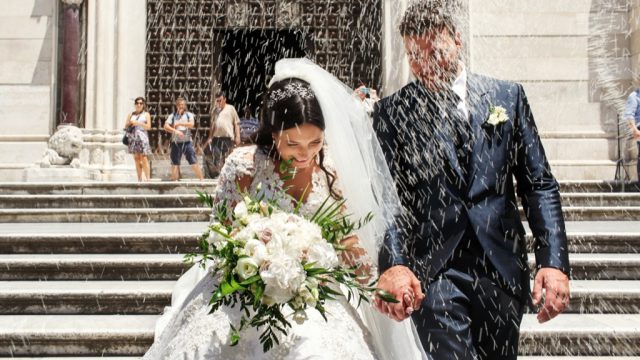
We’re betting that you, along with everyone else, can probably hum the well-known notes of “Here Comes the Bride”—now that we’ve mentioned it, the tune is probably ringing through your head right now. But when it comes to today’s weddings, the reality is that brides and grooms of all stripes are swapping out the instantly recognizable bells for Elvis or Adele. And it’s not just relegated to the DJ booth: while some people still hew to tradition, other head to a luxurious island instead of a church, choose a sapphire instead of a diamond, or even look at their partner’s outfit before the big moment.
The fact is, times are changing, and weddings are far from exempt. With that in mind, we combed through ancient and recent history to find some of the most old-fashioned traditions that simply are not today’s norm, like the fact that a bride once was not even allowed to give a toast at her own reception (sad, but true), or what it actually entailed for a bride to wear “something borrowed.” We guarantee that you’ll be surprised by some of the traditions we once fervently upheld when it came to walking down the aisle. And for help with knowing when it might be time for you to tie the knot, read up on This Is the Age Most People Get Married in Every U.S. State.
1
Bridal bouquets that were basically deodorant.
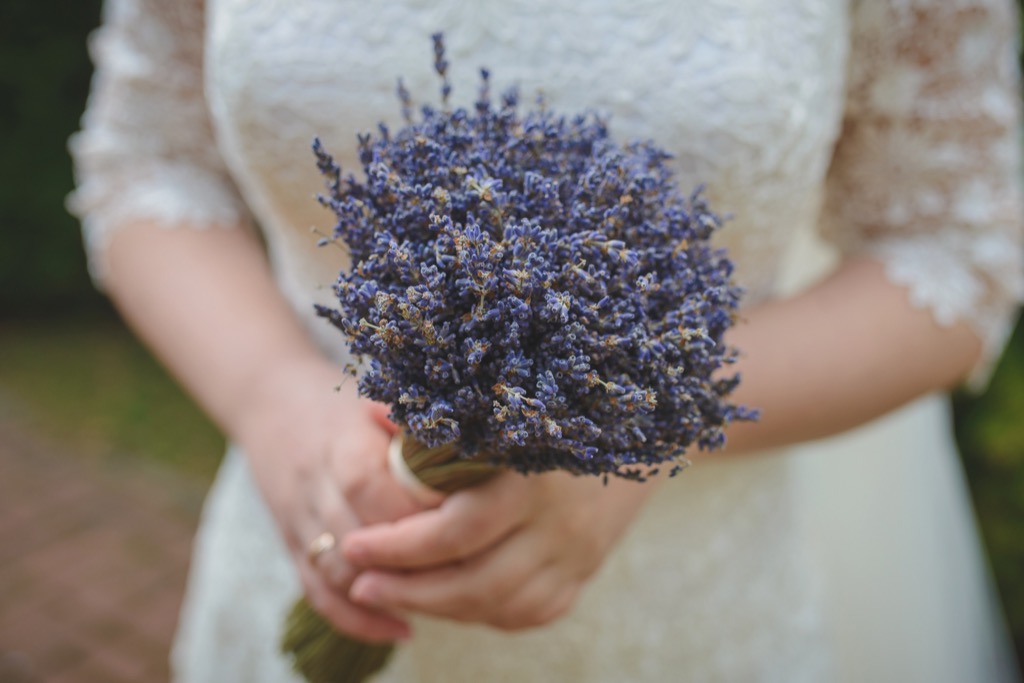
Yes, once upon a time, the bridal bouquet was not an aesthetic accent, but a necessary accessory. In the Middle Ages, brides would carry herbs with pungent scents, like dill and garlic, to ward off evil spirits and to mask the unpleasant scent of body odor. (Remember, they didn’t bathe very often back then.) Also, apparently dill has the added advantage of being an aphrodisiac, so the bride would conveniently have it on hand for herself and her new husband to consume post-ceremony. And for some notions that actually amp up the romance, don’t miss 20 Marriage Proposals That Will Make You Believe in True Love.
2
After the ceremony, the bride had to speak to her parents first.
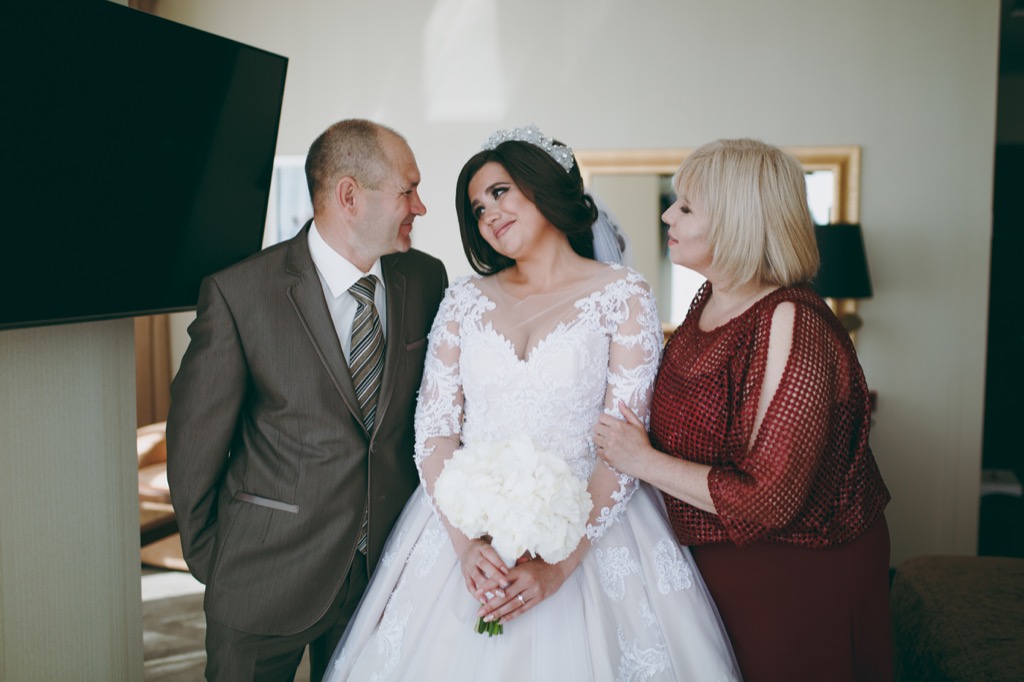
The prim and proper Ladies’ Book of Etiquette and Manual of Politeness, published in 1872, gives crisp directions for how the congratulations should be bestowed upon the bride, instructing that, “After the ceremony is over, the parents of the bride speak to her first; then her near relatives, and not until then the other members of the company.” We’re still not sure where the bride’s newly minted husband fell in this archaic lineup. And for some time-honored nuptial traditions that the most recently wedded royal couple were expected to adhere to, check out 20 Traditions Royal Brides Must Follow.
3
Only men could give toasts.
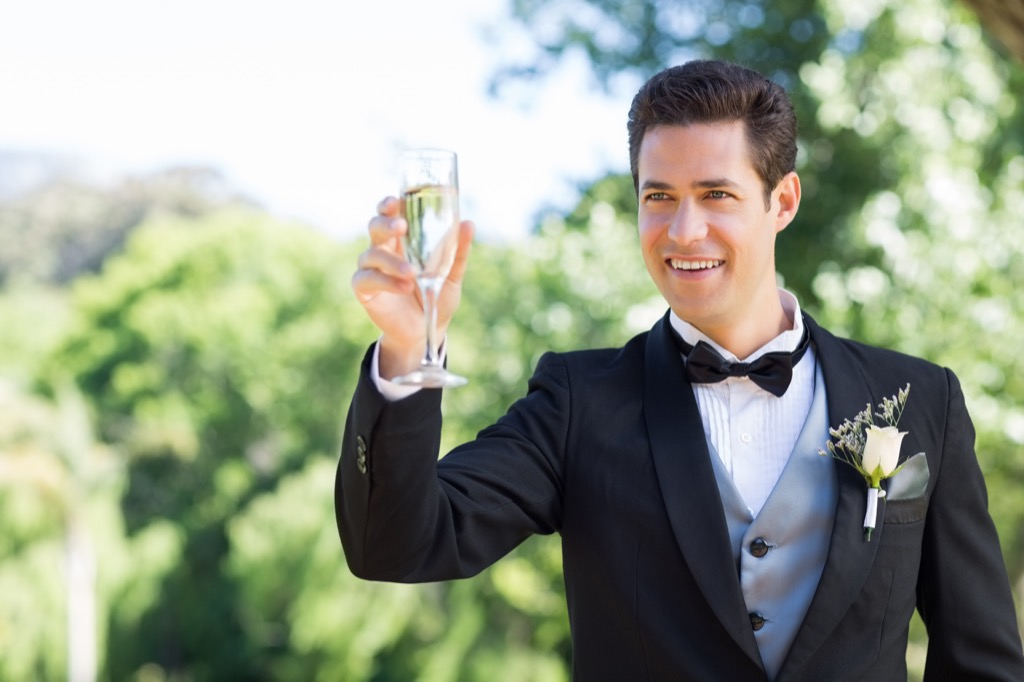
Dunbar’s Complete Handbook of Etiquette outlines a strict order of operations for the wedding reception toasts in its 1834 edition. A chorus of males must recite their “healths” for each other in a specific order, ricocheting between the oldest family friend, the groom, the best man, and the father of the bride. Needless to say, with all that male blustering going on, the ladies were never given an opportunity (much less allowed) to get a word in edgewise.
4
The “first look” had to be saved for the ceremony.
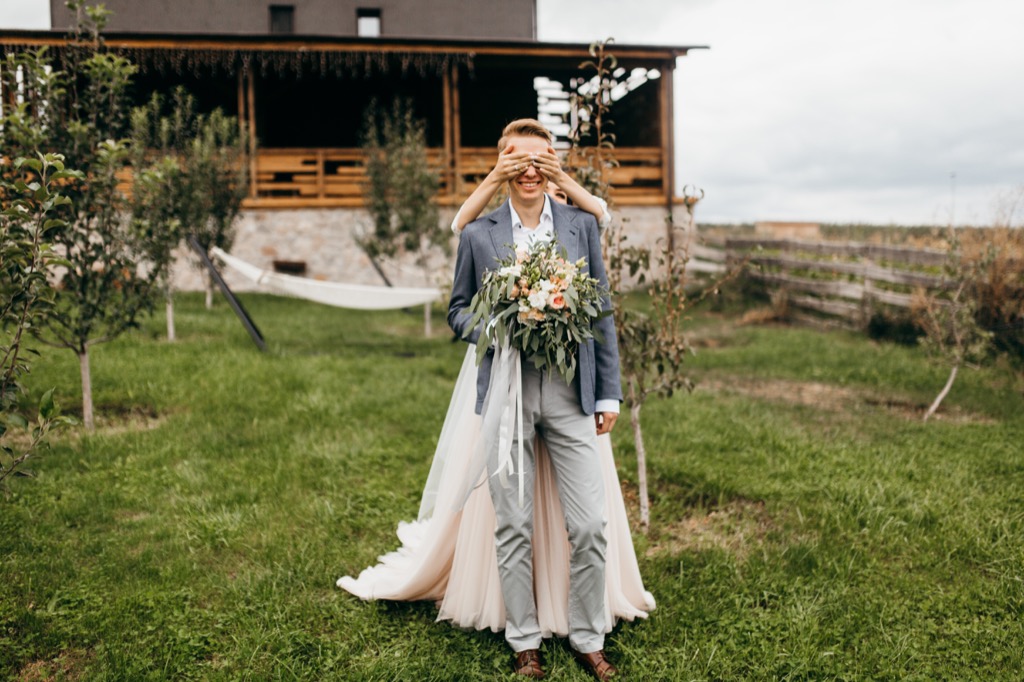
While some couples do still hold true to the superstition that it’s “bad luck” for the groom to see the bride in her dress prior to the wedding, there’s been a rising trend toward opting for a private, “first look” photo shoot immediately prior to the actual ceremony. Some brides and grooms have found that it eased their pre-wedding nerves to see each other before walking down the aisle. (How sweet is that?) Of course, others argue that the benefit of sticking to tradition is that everyone can observe the happy couple’s adorable reactions to seeing each other for the first time on their big day.
5
The bride’s father was the sole benefactor.

In bygone days, the father of the bride was expected to perform his duty and shoulder the burden of funding the wedding. This practice stemmed from the ancient concept of the wedding dowry, in which the family of the bride would essentially pay the husband-to-be a sum of money as a sort of thanks for being willing to marry their daughter. (Though in certain extreme cases, like if the husband divorced or abused his wife, the dowry was meant to be restored to her.) While how each couple decides to handle the finances of their wedding varies on a case-by-case basis today, the notion that the bride’s family will unquestionably foot the bill has dissolved in the wake of modern society’s advances, thankfully.
6
Rings could only have one gem: diamonds.

We’ve come a long way from the days of believing only diamonds could be a girl’s best friend, at least in terms of engagement rings. The Atlantic explains that the entire American obsession with equating diamond engagement rings and romance can be traced back to the De Beers jewelry company’s aggressive advertising campaign in 1939, which coined the slogan, “Diamonds are Forever.” (Which, considering the gem’s propensity for scratches and chips, we know to be far from true.) Today, society generally supports a woman’s choice to opt for a different stone, such as amethyst or turquoise—or even just forgo the ring and rock altogether—praising her as unique and cutting-edge.
7
Newlyweds were showered with rice.
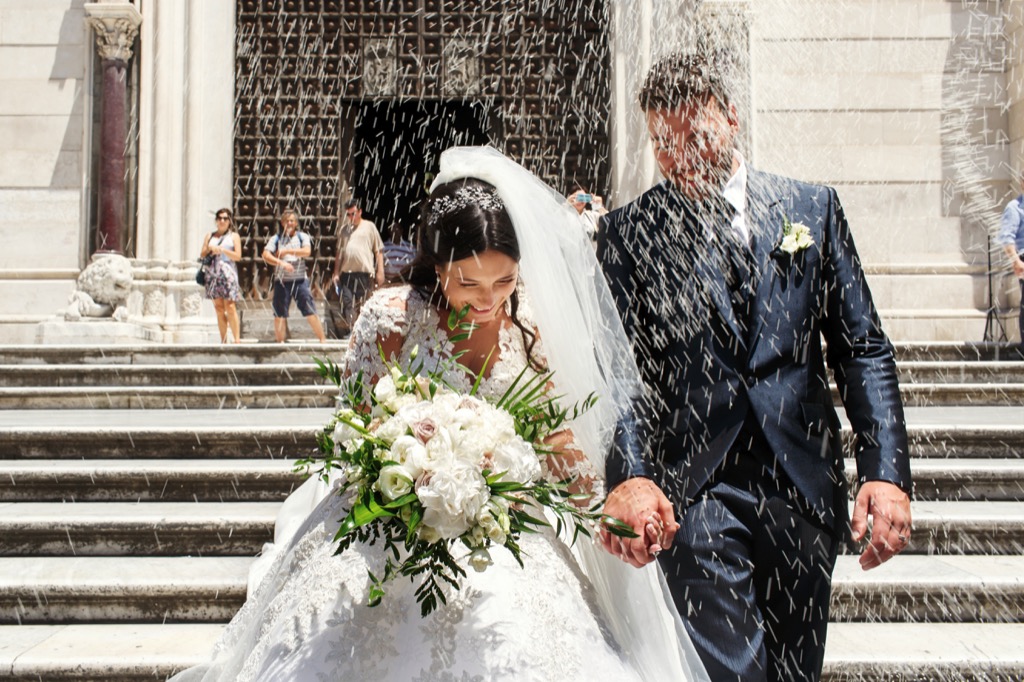
No other grains allowed. But seriously, rice was once the tossing tool of choice. For a fun twist on this tradition, The Knot recommends setting up a “toss bar,” where guests can create their own medley of glitter, popcorn, herbs, confetti, or whatever else their hearts desire to cast upon the exiting couple. Alternatively, you could opt for a very twenty-first century look and create an arc of sparklers for the newlyweds’ grand exit.
8
Only some brides could wear veils.
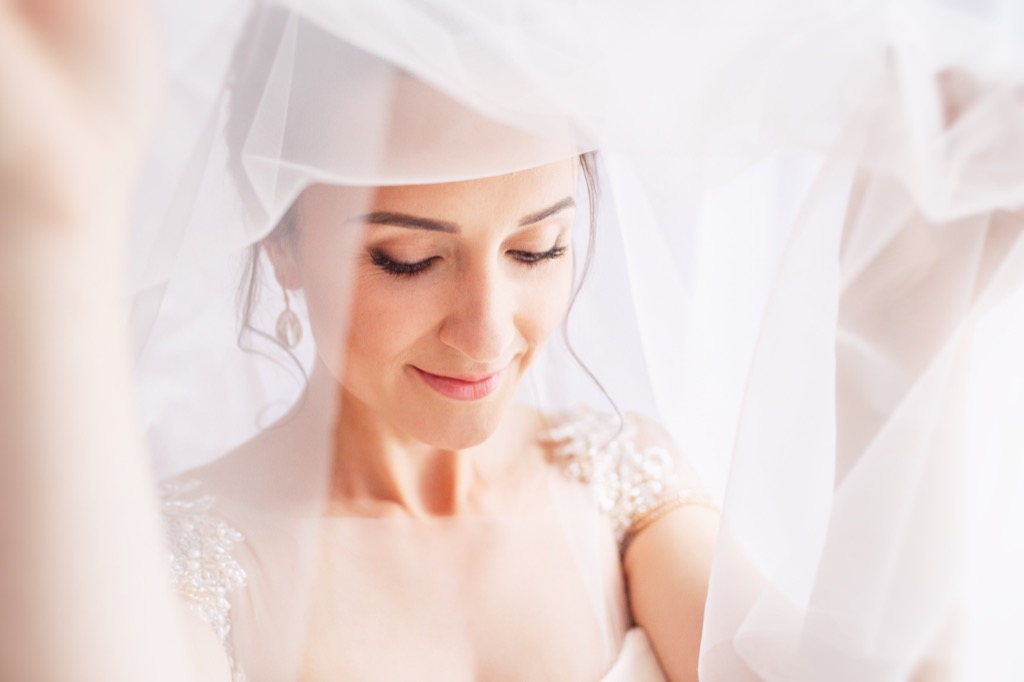
Nowadays, it’s up to the bride’s personal preference whether she opts for a gauzy, draping veil, or a chic, netted variety—or an entirely no-veil look. But according to tradition, only brides who weren’t too old were eligible for the privileges of veil-wearing. Dunbar’s Complete Handbook of Etiquette, published in 1834, lays out very clear instructions for brides who knew what was good for them: “Widows and ladies of middle age are married in bonnets.” End of discussion. And if you have friends who are taking their vows soon, you might want to brush up on the 17 Things You Should Never Wear at a Wedding.
9
The wedding cake had to be saved for the birth of the first kid.
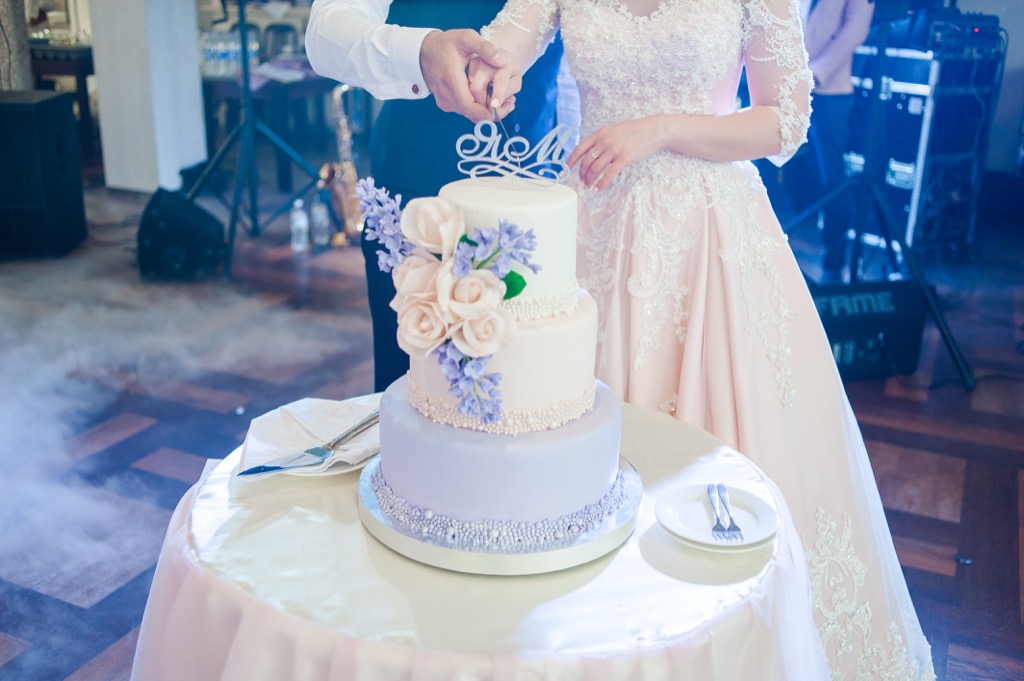
When a bride and groom cut into their wedding cake, they often set aside the top tier to be whisked away and placed in a freezer for safekeeping. Today, many couples savor the saved cake on their first anniversary. But according to Martha Stewart Weddings, tradition once held that the cake should be retrieved and eaten (after hopefully thawing for a couple of days) in celebration of the birth or christening of the couple’s first child, as that event was generally expected to occur within the first year of marriage.
10
That whole “burying the bourbon” thing.
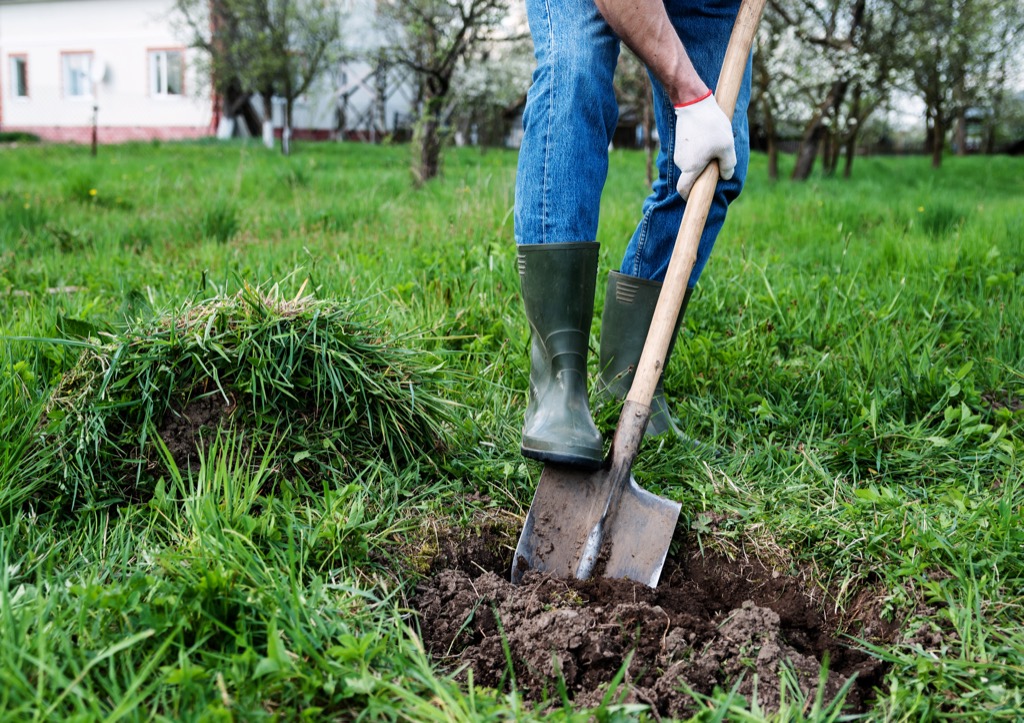
According to Southern Living, Southern folklore held that if an engaged couple wanted to secure sunny skies on their big day, they needed to bury a bottle of bourbon at their wedding site exactly one month prior to the ceremony. Of course, on the day of the wedding, the bottle was then dug up to join the lineup of beverages available at the reception. We can’t help but wonder if this was just an elaborate ploy on the part of the bourbon industry—after all, the liquor was first concocted right in the heart of Kentucky. And to learn about more products that were born right here in America, don’t miss The Most Groundbreaking Invention from Every U.S. State.
11
Newlyweds were forced to kiss over cake.
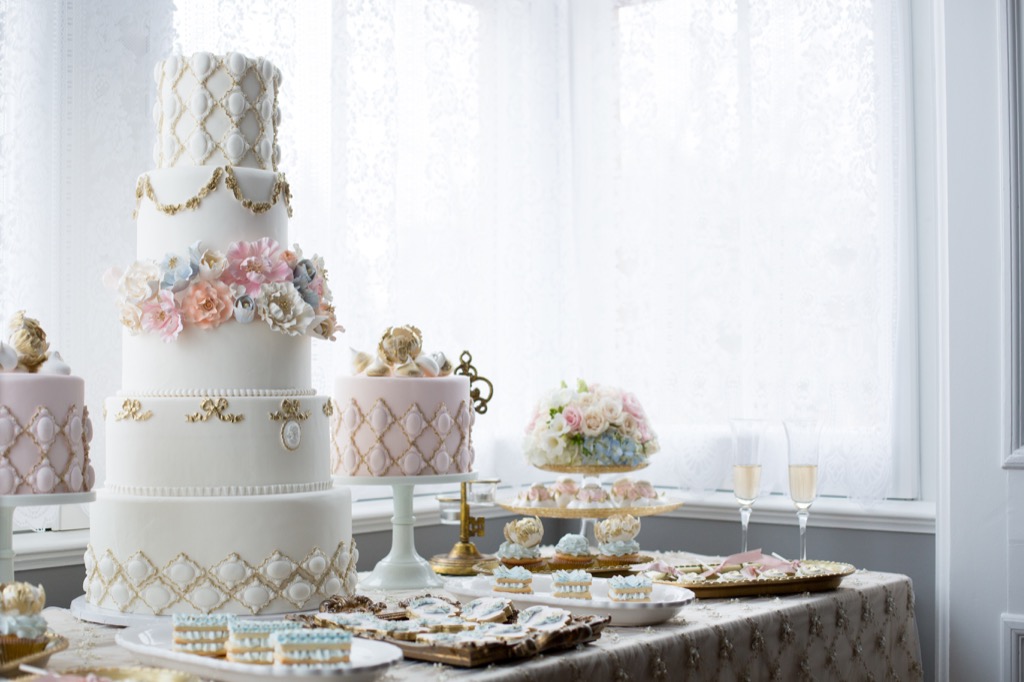
In the Middle Ages, newlyweds were made to undergo a rigorous test: spiced buns were piled between them, and the couple would have to do their best to kiss over the towering stack—if they succeeded in locking lips, it was perceived as an omen of good fortune about their marriage. Apparently, this tradition is partially what led to the elaborately tiered, daringly tall wedding cakes of today. And while you and your spouse might sneak a smooch before cutting the cake, we’ve long since stopped believing that the quality of your kiss will predict your marital prosperity.
12
Brides would put a sixpence in their shoe.

A silver sixpence, to be exact. Supposedly, a bride would place this coin in her shoe as an extra measure to secure good luck. We can’t help but think that it would probably just increase the bride’s chances of stumbling as she journeys down the aisle with all eyes on her, though.
13
The groom would carry the bride over the threshold.
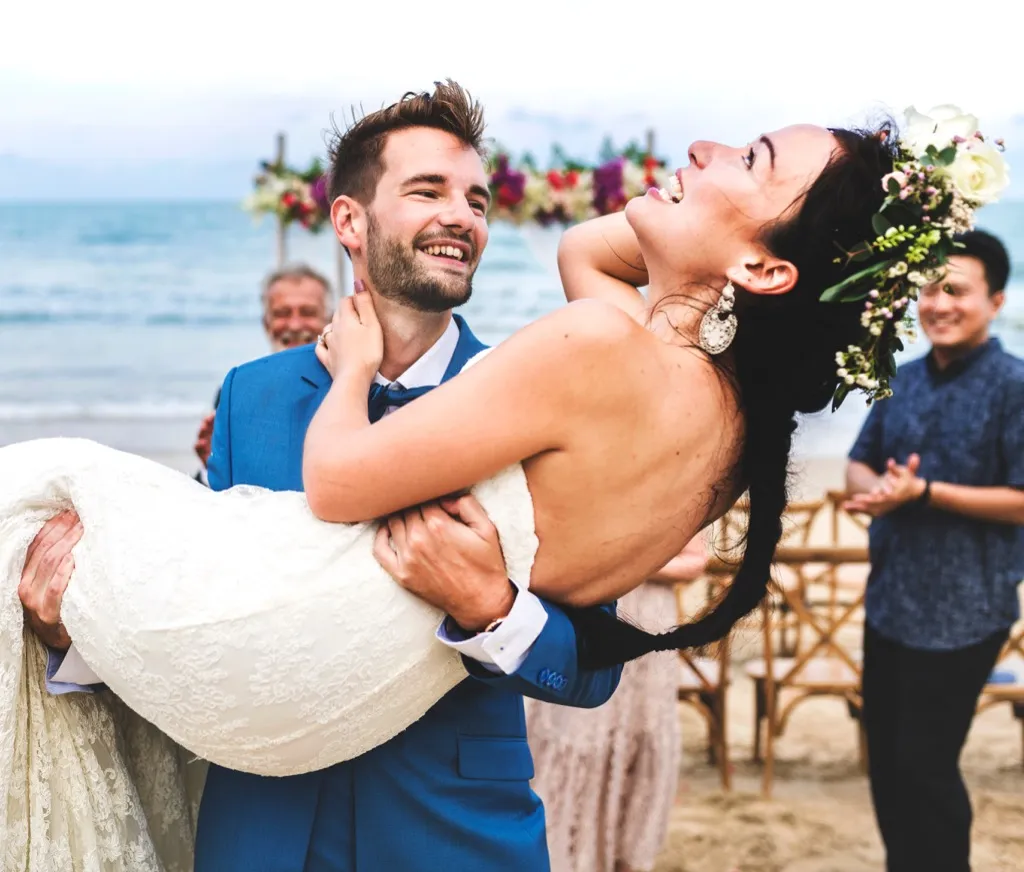
Sure, plenty of newlyweds might still engage in this romantic gesture—but we doubt that it’s because the groom is frightened his new bride will track evil spirits into their home. According to Martha Stewart Weddings, medieval Europeans used to believe that the soles of a new bride’s feet were extremely susceptible to letting evil spirits seep in, so, out of sheer defensive necessity, the groom would obligingly scoop his new wife up into his arms when first entering their home.
14
Weddings could only be held on weekdays.
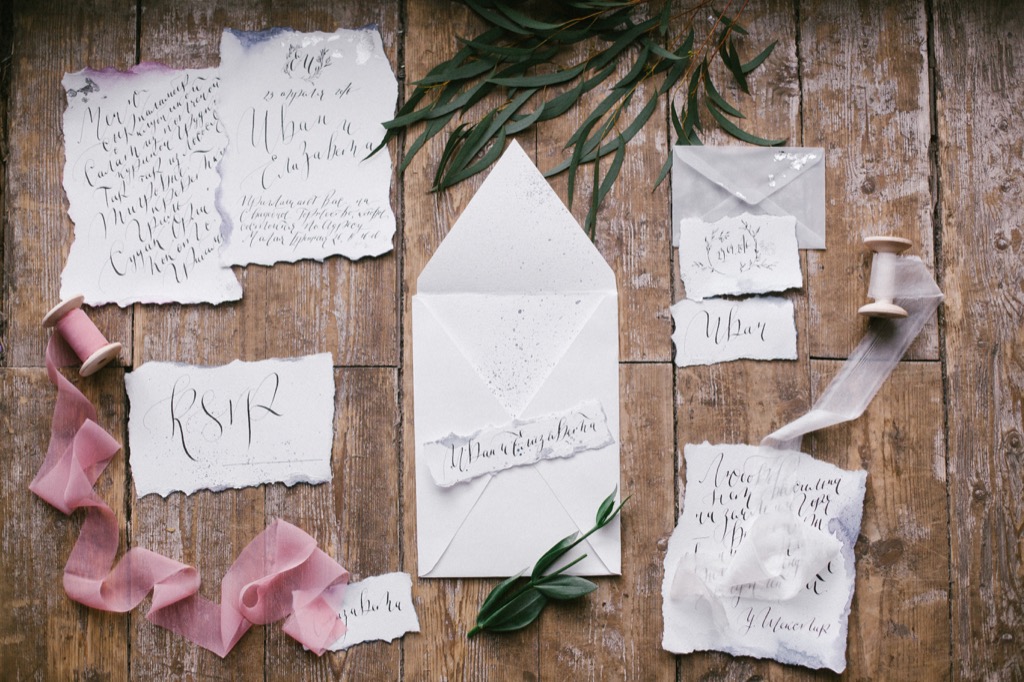
The 1903 edition of the White House Book of Etiquette made a point to admonish young women selecting their wedding date of the rhyme: “Mondays are for wealth, Tuesday for health…Saturday no luck at all.” The point being, a young lady with any proper upbringing should know better than to schedule her wedding on a weekend. Times have certainly changed, though. Today, it’s much more common to hold your wedding on a weekend, partially to better accommodate guests who need to travel long distances for the ceremony.
15
Weddings began right at noon.
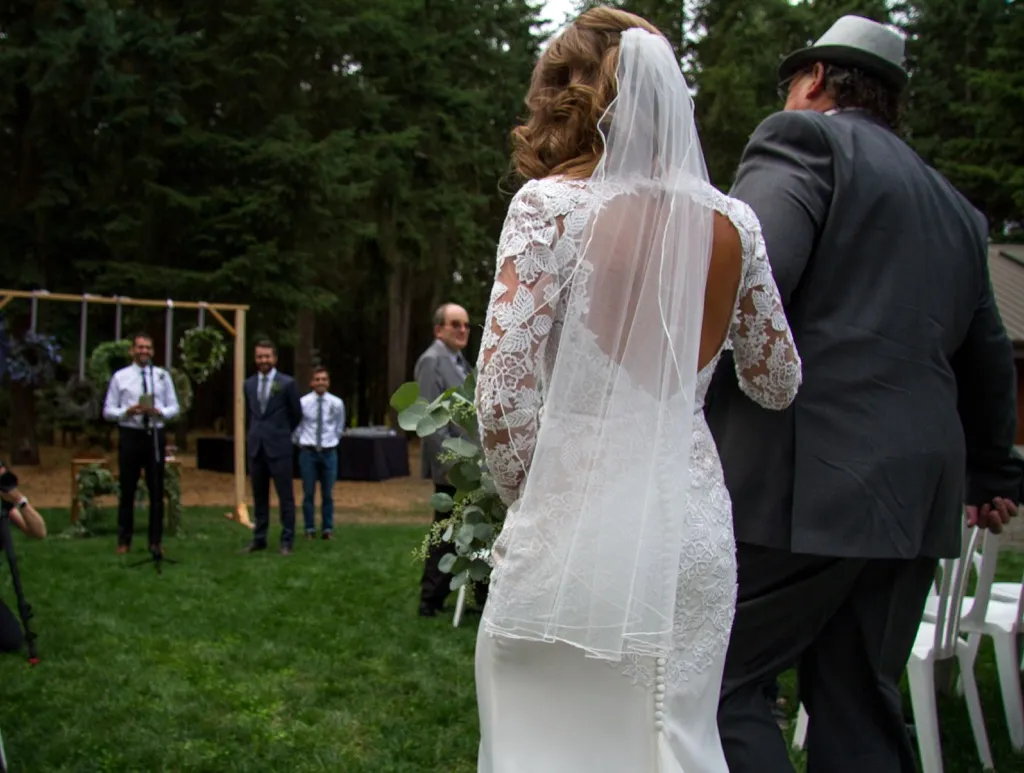
While mid-afternoon ceremonies are quite the rage nowadays, morning weddings, or even weddings at noon, right on the dot, were once the most decorous choice. The White House Book of Etiquette advised in 1903 that “high noon is a very fashionable hour for a wedding.” However, the book did go on to admit that afternoon weddings were increasing in popularity, as entertaining the wedding guests with a reception was a simpler option than holding a wedding breakfast. All we can say is that we’d loved to have been invited to one of those meals.
16
“Something borrowed” meant another woman’s undergarments.
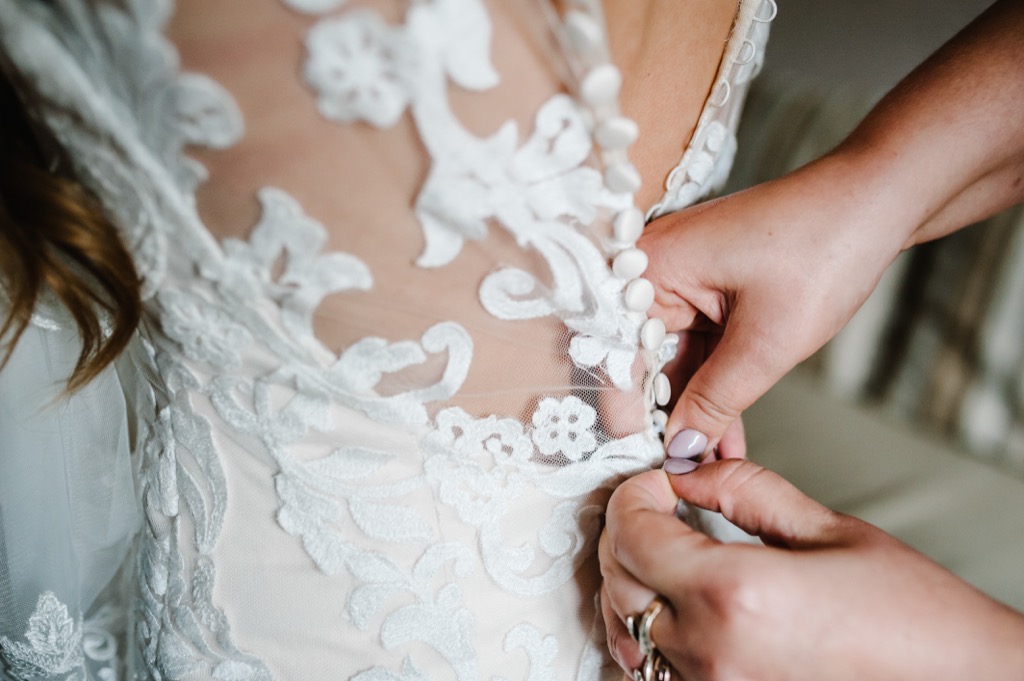
The quintessential nuptial stanza (“something old, something new…”) wasn’t always as sweet as it is today. According to English folklore, the “something borrowed” part was meant to enhance the bride’s fertility—meaning: she would wear undergarments belonging to another woman who had already been pregnant, in order to increase her own likelihood of childbearing. Now, that’s no vintage pearl necklace from Grandma’s jewelry box.
17
Brides had to wear nonwhite dresses.
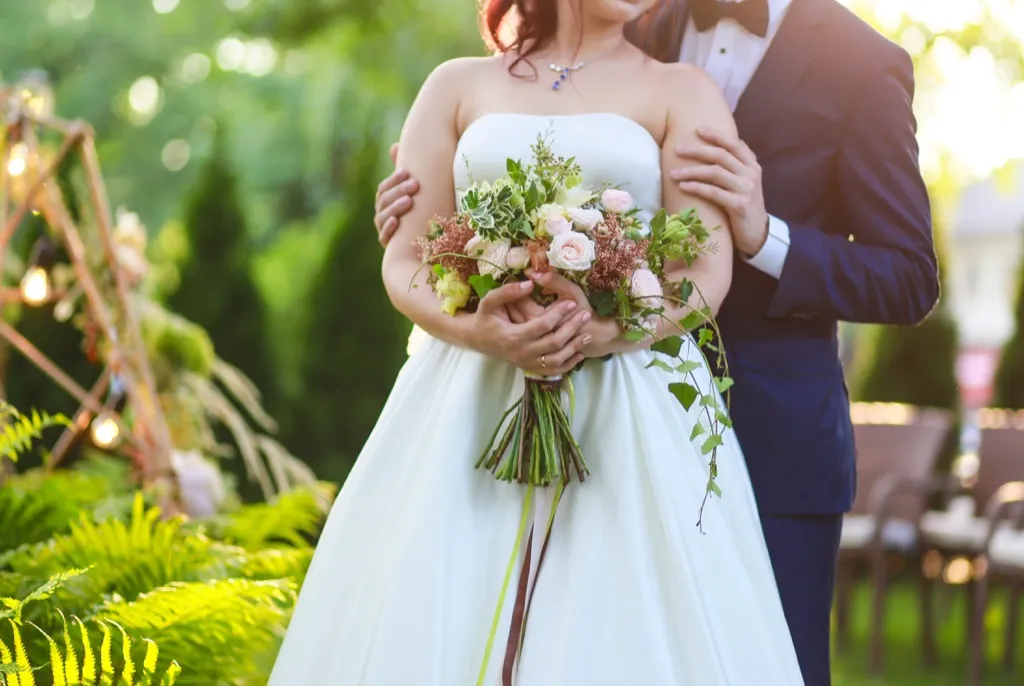
The version of the fairytale, flowing white dress we associate with brides today is a relatively new concept. Up until 1840—which relatively wasn’t that long ago, as far as weddings are concerned—it was considered commonplace for a bride to wear any color of dress she wanted for her wedding. But that all changed when Queen Victoria arrived for her wedding to Prince Albert, clad in a simple, elegant, flowing white dress. The world looked upon the bridal vision in awe, and so, tradition was born. And for more on weddings that left a mark on history, don’t miss the 15 Most Lavish Celebrity Weddings of All Time.
18
Weddings had to happen in June.
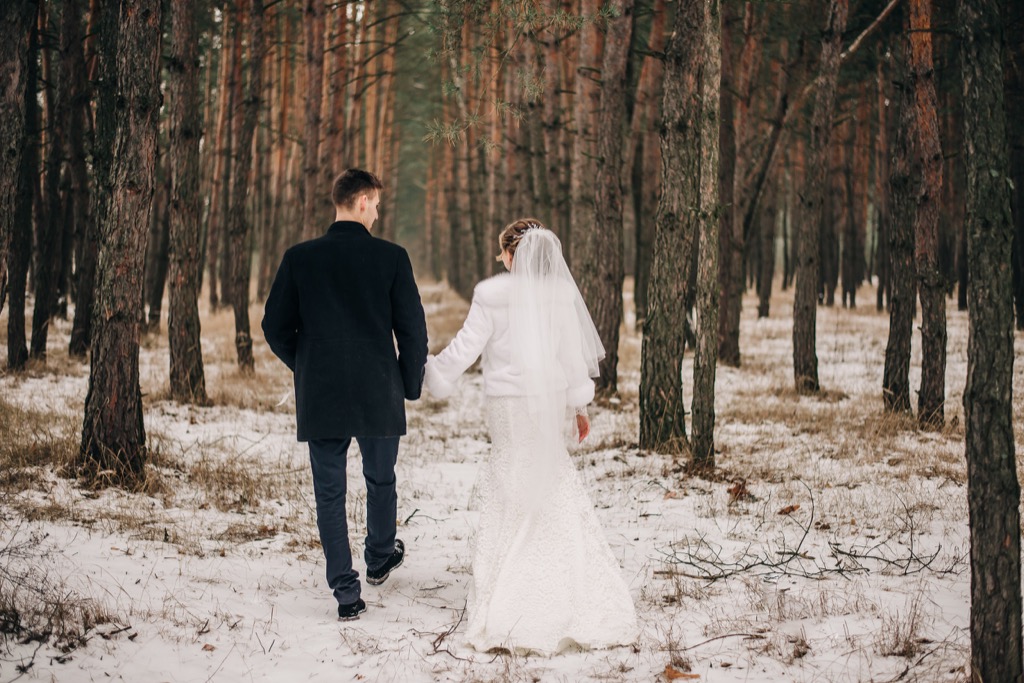
“Oh they say when you marry in June, you’re a bride all your life,” a chorus of women trilled in the 1950s musical Seven Brides for Seven Brothers. While it is true that our elders grew up with the notion of the ideal summer wedding, this belief actually can be traced back to ancient times, as late springtime was when the Roman goddess of marriage, Juno, was at the height of her powers and best able to bless a marriage. Now, though, a couple is supported in whatever season of wedding they choose—the crisp autumn wedding or the cozy wintertime matrimony are equally as appealing, depending on the couples’ tastes and timeline.
19
Only one song (yes, that song) was allowed.
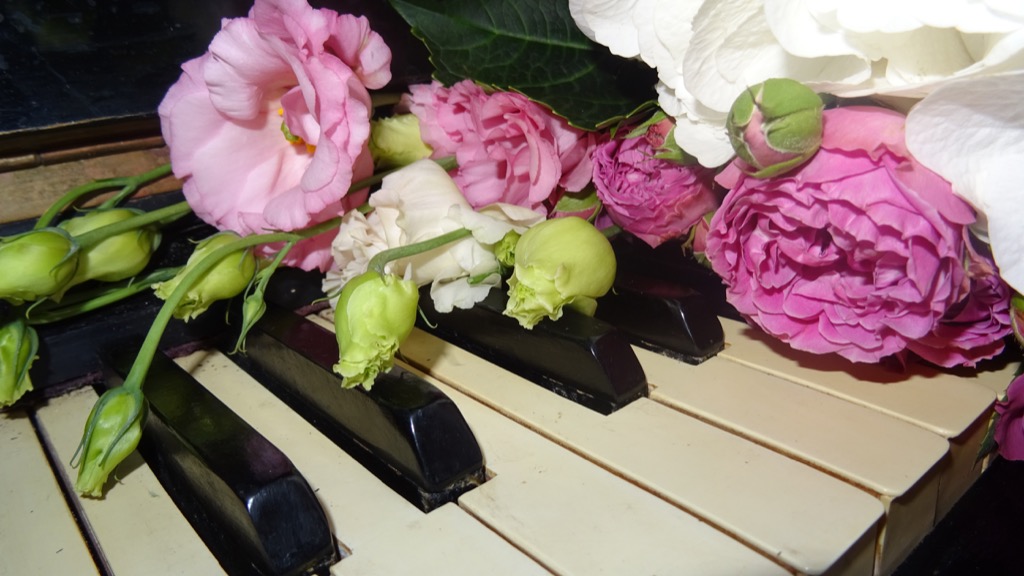
The well-known tune of Richard Wagner’s “Bridal Chorus,” better known as “Here Comes the Bride,” was the token wedding anthem after 1858, when it made its first matrimony-related appearance in a British royal wedding. Now, brides walk the aisle to music ranging from Elvis’ soulful “Can’t Help Falling in Love With You” to Christina Perri’s heartfelt “A Thousand Years”—whatever strikes a chord.
20
Ringing church bells was mandatory.
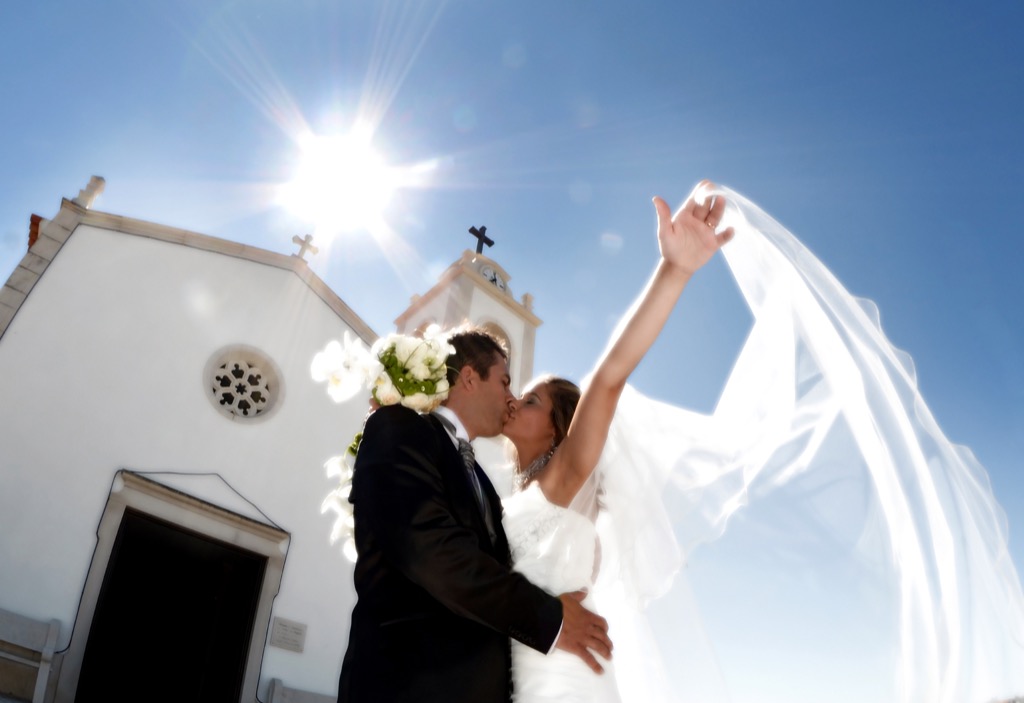
With fewer weddings being held in churches, it’s less and less common for a happy union to be announced with the joyful pealing of bells. According to Martha Stewart Weddings, “Bells are traditionally chimed at Irish weddings to keep evil spirits away and to ensure a harmonious family life.” That said, if a bride chooses to have an outdoor wedding but still wishes to hearken to the tradition in some way, smaller bells may be used as accents among the decorations.
To discover more amazing secrets about living your best life, click here to sign up for our FREE daily newsletter!